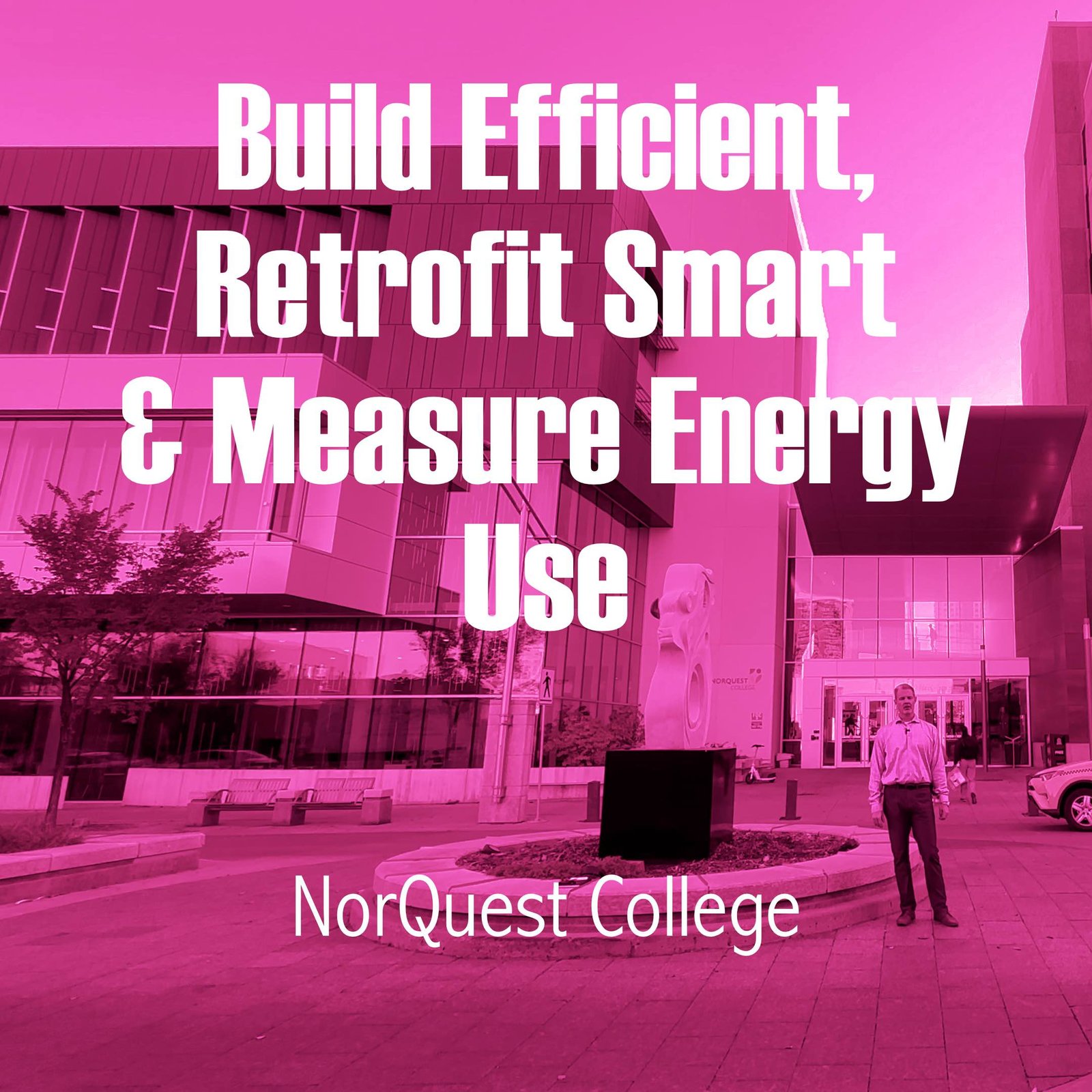NorQuest College spends about $1.3 million yearly on utilities at its downtown campus. They may be constrained by budgets, but by building green and participating in an energy benchmarking program they are finding innovative ways of saving energy and reducing emissions.
In 2018, the college built the Singhmar Centre for Learning to LEED Gold standard, which is easiest to achieve in a new building.
They were also retrofitting the adjacent Civic Employee’s Legacy Tower (CELT) around the same time.
Coordinating the two projects – new build and retrofit – NorQuest was able to replace the heating system in the CELT building with energy-efficient boilers and a new cascading heating system that heats both buildings at once.
The system heats the CELT building first, and then leftover heat is passed through the Singhmar Centre.

Two buildings, one heating system
“It allows us to use that heating water from the boiler plant twice,” says Jason Schuller the manager of Facilities and Operations at NorQuest. “You only have one boiler plant to maintain and the entire system is more efficient.”
Jason gave us a tour of the many energy-efficient features at the Singhmar Centre. There’s a rainwater collection system, a light wall in the ceiling of the atrium to provide natural light, and a double facade (window) system on the west side that helps keep heat in and cold out.
There’s also a giant heat wheel that recovers 80 per cent of the energy from exhaust air, water conservation measures, LED lighting and automated control systems that help conserve energy. Overall, the Singhmar Centre is about 30 per cent more energy efficient than a code-built building.







You can’t manage what you don’t measure
NorQuest has also installed the first phase of a data monitoring system. Comprehensive data is invaluable when it comes to managing large, complicated facilities and their system has already proven effective at reducing costs through smart management.
For example, the Singhmar Centre uses two industrial chillers to control heating within their buildings. One large chiller and one smaller chiller that lets them handle lighter needs more efficiently.
Through data monitoring Schuller found “the big chiller was running in the middle of the night, just cycling on and off.”
“That wasn’t very efficient or good for the equipment,” he says. With a few small changes, Schuller’s team ensured the small chiller would shoulder the load at night and as a result, “we saved 20 per cent in energy.”
This one small change saves NorQuest about $300 per month on energy costs.

Data-driven decisions
Participants in the City of Edmonton’s Building Energy Benchmarking program share utility data and learn about their building’s performance. Year-over-year this improves building energy efficiency and contributes to energy savings and greenhouse gas reductions.
“The [benchmarking] program allows us to measure our performance versus our peers, particularly in the college and university category, and we’re very proud here at NorQuest College to have been the top performing building in that category for the last several years.”
In addition to their benchmarking data, NorQuest’s energy monitoring system provides an additional 55,000 data points. Schuller says the next step is to install a much more sophisticated data monitoring system.
“The opportunity is quite great for us to explore other savings and efficiency gains.”
NorQuest also carried out a greenhouse gas inventory which shows they have reduced their emissions by three per cent over the last few years.
These efforts translate into a three per cent reduction in energy use, which translates into $30,000 a year in utility savings.
Through networking with his peers, Schuller has picked up many new ideas and even though it’s quite daunting he has his eye on the big goal.
“I think [in the] longer term everybody’s going to be moving towards net zero and it, it’s going to be hard to get there, but we have to start somewhere.”

